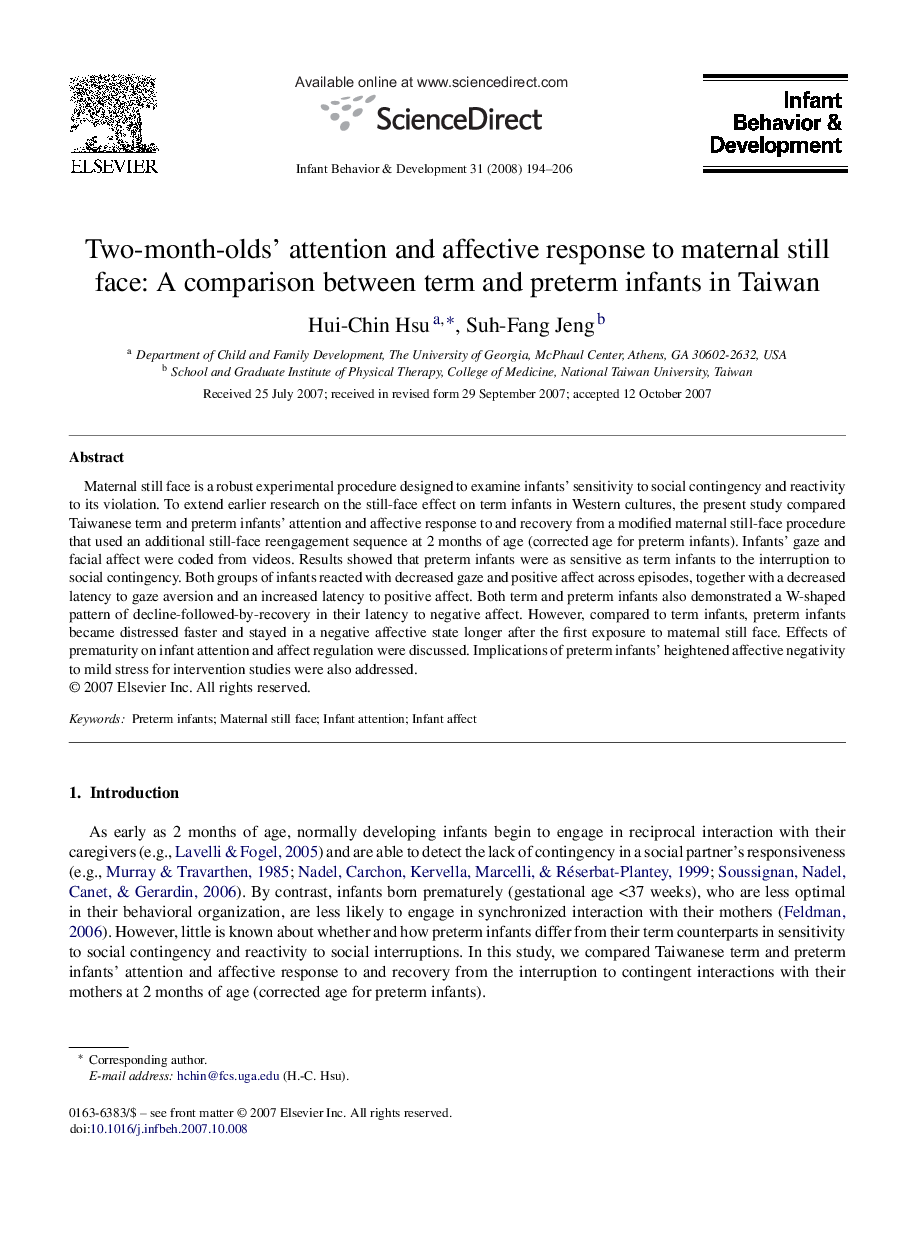| Article ID | Journal | Published Year | Pages | File Type |
|---|---|---|---|---|
| 917460 | Infant Behavior and Development | 2008 | 13 Pages |
Maternal still face is a robust experimental procedure designed to examine infants’ sensitivity to social contingency and reactivity to its violation. To extend earlier research on the still-face effect on term infants in Western cultures, the present study compared Taiwanese term and preterm infants’ attention and affective response to and recovery from a modified maternal still-face procedure that used an additional still-face reengagement sequence at 2 months of age (corrected age for preterm infants). Infants’ gaze and facial affect were coded from videos. Results showed that preterm infants were as sensitive as term infants to the interruption to social contingency. Both groups of infants reacted with decreased gaze and positive affect across episodes, together with a decreased latency to gaze aversion and an increased latency to positive affect. Both term and preterm infants also demonstrated a W-shaped pattern of decline-followed-by-recovery in their latency to negative affect. However, compared to term infants, preterm infants became distressed faster and stayed in a negative affective state longer after the first exposure to maternal still face. Effects of prematurity on infant attention and affect regulation were discussed. Implications of preterm infants’ heightened affective negativity to mild stress for intervention studies were also addressed.
